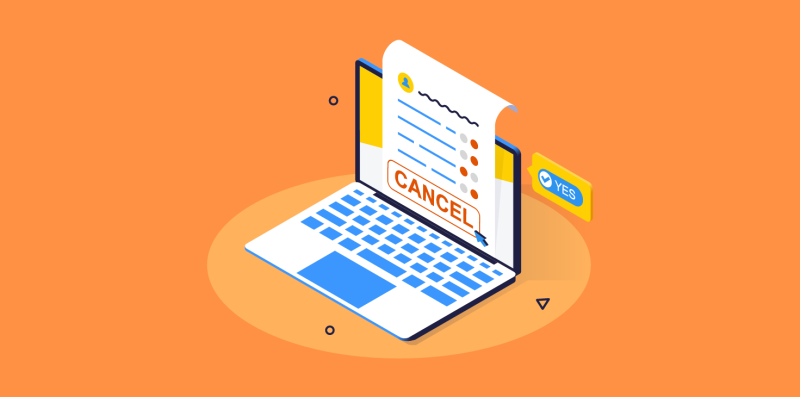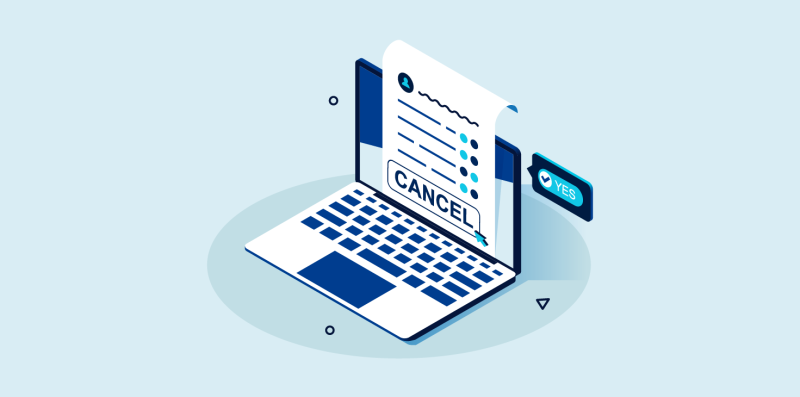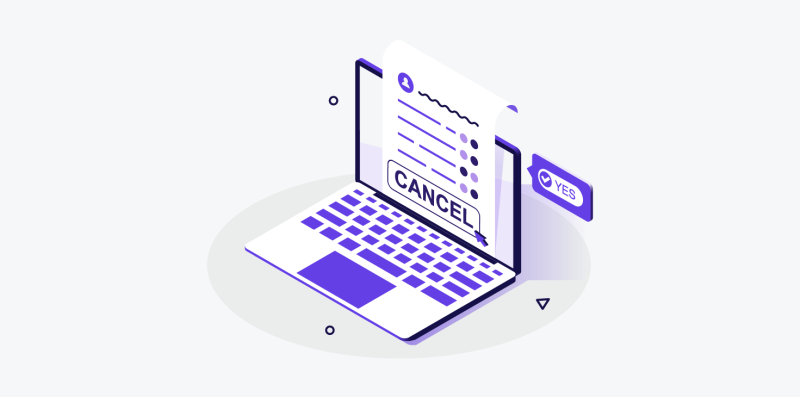Understanding how to login to cPanel is essential for managing your website effectively. This comprehensive guide will explore various methods and best practices for accessing your cPanel account. No matter your experience level, this data will be useful for utilizing the cPanel interface.
We’ll begin by discussing available cPanel login options and how they can be accessed through your web hosting provider. Next, we’ll cover the process of logging in directly to cPanel using either your existing domain or temporary URL.
Security is crucial when it comes to managing websites; hence, we will also provide tips on securing your cPanel login credentials. Finally, we’ll provide solutions to address any potential issues that may arise while logging in and offer ways to troubleshoot them efficiently.
Table of Contents
Understanding cPanel Login Options
cPanel is a powerful web hosting control panel allowing you to manage your website easily. Gaining familiarity with the process of logging into cPanel is a must for all levels of web hosting users, from novice to experienced. In this section, we’ll explore the various ways you can access cPanel so that you can choose the best method for you.
1) Logging into cPanel through Your Web Hosting Provider’s Client Area
Many web hosting providers offer easy access to cPanel directly from their customer client area. This option simplifies the login process by allowing you to use your existing account credentials without needing separate login details for cPanel itself.
Steps:
- Log in to your web hosting provider’s customer portal using your email address and password.
- Go to your provider’s customer dashboard’s “Services” or “My Services” page.
- Select the appropriate hosting plan associated with your domain name.
- Look for an option labeled “cPanel,” “Control Panel,” or similar terminology and click on it.
You should now be logged into your cPanel account.
Already a ChemiCloud customer? Please follow the steps described below:
Step 1) Go to chemicloud.com/login and log in to your account.
Step 2) While in your Client Area Dashboard > Active Services, click the cP icon on the right side, and you’ll automatically be logged in without needing a username and password.

That’s it! This action will log you in cPanel automatically. That was easy, right?
Are you struggling with website management? 🤔 Build more and spend less time managing your websites with our easy-to-use client area! From cPanel quick-launch and disk usage stats to creating an email account, all the tools you need are in one convenient dashboard ✅. Check out our client area demo.
2) Logging into cPanel Directly via URL
If accessing through a web host isn’t possible or convenient, another way is logging in directly via URL using either HTTP (unsecured) or HTTPS (secured). To do this, please follow the steps below:
Step 1) Enter one of these URLs into your browser’s address bar:
http://yourdomain.com/cpanel(non-secured)
orhttps://yourdomain.com:2083/(secured)
Step 2) Replace “yourdomain.com” with the domain name you were provided when setting up your web hosting account. You’ll be prompted to enter your cPanel username and password, which you should have received from your web hosting provider when setting up the account.
Your login screen should look like this:
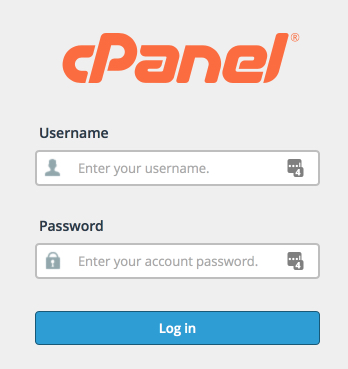
Step 3) Enter your cPanel username in the Username text box. Then enter your password in the Password text box.
Step 4) Click Log in.
Important: Before using this login method, your domain must be pointed to the DNS of your current web host. But don’t fret – there are other options available! You can log in to cPanel via IP address or the server’s hostname. Read on to find out more about these alternatives.
3) Logging into cPanel via IP Address
If you cannot access cPanel using either of the methods above, try logging in directly through an IP address provided by your web host. This method can be helpful if there are DNS issues or if you haven’t yet pointed a domain name at your server.
http://server-ip-address/cpanel(non-secured)
orhttps://server-ip-address:2083/(secured)
Contact your web hosting provider for assistance in obtaining the correct IP address for this purpose.
In summary, understanding how to log in to cPanel is crucial for managing websites effectively. Whether accessing it through a web host’s control panel or directly via URL/IP address, always ensure that you use secure login credentials and follow best practices for online security.
Securing Your cPanel Login
In this digital age, securing your cPanel login is crucial to protecting your website from threats and unauthorized access. Implementing effective safety protocols can be beneficial in the long run, providing savings in time and resources. In this section, we will discuss various ways to enhance the security of your cPanel account.
1) Enabling Two-Factor Authentication (2FA)
Two-Factor Authentication (2FA) adds an extra layer of protection by requiring users to provide two forms of identification when logging into their accounts: something they know (their password) and something they have (such as a one-time code generated by an authenticator app). Enabling 2FA on your cPanel account significantly reduces the risk of unauthorized access.
To enable two-factor authentication in cPanel, please follow the steps below:
Step 1) Once logged into cPanel, scroll down to the Security group and click Two-Factor Authentication.
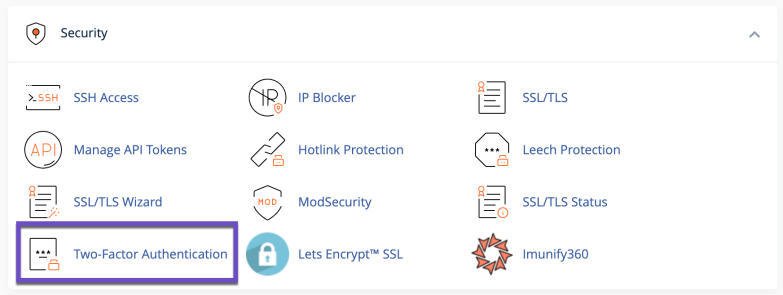
Step 2) The two-factor authentication interface will appear. Click Set Up Two-Factor Authentication. A QR code will appear on your screen. At this point, you’ll need to set up a two-factor authentication application on your smartphone. For Android™, iOS® we recommend — Google Authenticator™
Step 3) You can either snap a photo of the QR code with your application or manually enter the account, and the key smartphone application will generate a security code.
Step 4) Enter that code into the cPanel interface, and click Configure two-factor authentication. (A confirmation message will appear).
Step 5) Now, we’re ready to test two-factor authentication. Let’s go ahead and log out of cPanel. Now try to log in again into cPanel. Enter your username and password and click Login.
Step 6) The two-factor authentication login interface will appear on your smartphone. Open your application and generate a security code.
Step 7) Then, enter that number into the login interface and click Continue. We’re now logged into cPanel!
Reconfiguring two-factor authentication lets you go through the setup process again. This is useful if you replace your smartphone or want to use a new authentication application.
2) Using Strong Passwords
A strong password is essential for maintaining a secure connection with your cPanel account. A strong password should be at least 12 characters long and include uppercase letters, lowercase letters, numbers, and special symbols. Avoid using easily guessable information such as names or dates related to yourself or family members. You can use online tools that generate random passwords for added security.
3) Regularly Update Your Passwords
- Change your cPanel password every three months or more frequently if needed.
- Avoid reusing old passwords across different platforms or services.
- If you suspect any suspicious activity on your account, change all associated passwords immediately.
The steps below will quickly take you through changing your cPanel account password. Remember that this only works if you know your current cPanel account password.
Step 1) Once logged into cPanel, scroll down to the Preferences section and click Password & Security.

Step 2) In the next window, enter your old password, type in your new password, and confirm it. If you are highly conscious about your password security and want to use a sophisticated password, using the Password Generator might be a good idea.
Make sure to keep your eye on the password strength meter. Just like creating a password for other websites, it is essential to create a strong password to prevent your account from being compromised.
Strong passwords usually include lower and upper case letters, numbers, and special characters such as @,#,~,_, (,* .
And that’s it! Now you know how to change your cPanel Account Password!
4) Securing Connection (SSL)
Accessing your cPanel account over a secure connection ensures that data transmitted between your device and the server is encrypted, protecting it from potential eavesdropping or tampering. Always use HTTPS when accessing cPanel by entering https://yourdomain.com:2083 as the cPanel URL. If you have not installed an SSL certificate on your domain, contact your hosting provider for assistance.
🔐 ChemiCloud customers can use ChemiCloud’s Let’s Encrypt integration with all our hosting plans, including automatic and free SSL certificates for all your sites. Best of all, our free Let’s Encrypt SSLs even support wildcard domains.
5) Monitoring Login Attempts
Regularly reviewing login attempts to your cPanel account can help identify any unauthorized access attempts. To check recent logins, navigate to the “Last Login IP Address” section in the main dashboard of cPanel. Be vigilant about any unfamiliar IP addresses or locations and take necessary action if needed.

Utilizing these safeguards can be immensely beneficial in protecting your website from cyber-attacks and unapproved access. Always stay informed about new security practices and technologies to keep up with evolving online risks.
Securing your cPanel login is essential for keeping your website safe from malicious attacks and unauthorized access. To ensure you have the best cPanel experience, let’s now look into resolving any login problems.
Troubleshooting Common cPanel Login Issues
Sometimes, you may encounter some difficulties when accessing your cPanel account. This section will solve common login issues and help you regain access to your cPanel.
1) Incorrect Username or Password
If you cannot log in due to an incorrect username or password, first ensure that the credentials are entered correctly, taking note of any capitalization or special characters. If the issue persists, try resetting your password by following these steps:
- Request assistance from your web hosting provider to reset your password.
- Check your email for a message containing instructions on how to reset your password.
- Create a secure password that meets the recommended security guidelines (e.g., using uppercase letters, lowercase letters, numbers and symbols).
2) Browser Cache Issues
Your browser cache might be causing problems accessing cPanel if it contains outdated website or server settings information. To resolve this issue:
- Clear your browser cache
or - Log into cPanel using another web browser or an incognito/private browsing window.
3) IP Address Blocked by Firewall
In some cases, repeated failed login attempts can result in being blocked by the server firewall as a security measure against brute force attacks. To unblock yourself from such situations:
- Contact the hosting provider support team and request them to unblock your IP address.
- It may be possible to wait until the block is automatically released after a specific interval (generally 15-30 minutes).
4) Domain Name Server (DNS) Issues
There could be problems with the DNS settings if you can’t access cPanel through your domain name. To resolve this:
- Check if your domain’s DNS is properly propagated
- If you’ve recently switched your domains’ DNS, there might be a chance for you to see cached DNS results. In this case, you can try to flush your DNS.
- As a last resort, contact your web hosting provider or domain registrar for assistance in resolving any DNS-related issues.
If the previous solutions fail, contact your web hosting provider’s support team for further help resolving any login issues. They will help diagnose and resolve any login issues specific to their platform or server environment.
Frequently Asked Questions on How to Login to Cpanel
How can I login to cPanel?
To log in to cPanel, you can either access it through your web hosting provider’s dashboard or by visiting the direct URL. The direct URL typically follows this format: http://yourdomain.com/cpanel or https://yourdomain.com:2083 (for a secure connection). Enter your username and password provided by your hosting provider.
How to access cPanel without a password?
Contact your web hosting provider for assistance if you’ve lost or forgotten your cPanel password. They may provide a reset link or help you recover the account. Alternatively, if you can access the email associated with the account, try using the “Forgot Password” option on the cPanel login page.
Why can’t I log into cPanel?
You might be unable to log into cPanel due to incorrect credentials, IP blocking from multiple failed attempts, server issues, or an expired domain name. Double-check your username and password; contact your web hosting provider for further assistance if that doesn’t work.
Conclusion
After reading this guide, you should better understand the various ways to log in to cPanel, including accessing it through your web hosting provider or logging in directly. Additionally, you learned how to secure your cPanel login and troubleshoot common issues that may arise.
Overall, knowing how to login to cPanel is an essential skill for anyone managing a website. By following these steps and best practices outlined in this guide, you can ensure that your experience with cPanel is efficient and secure.
If you’re looking for more tips on managing your website or want to stay up-to-date on the latest industry news and trends, check out our blog at Chemicloud.
